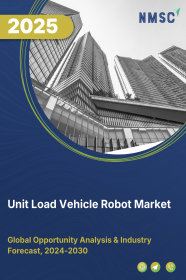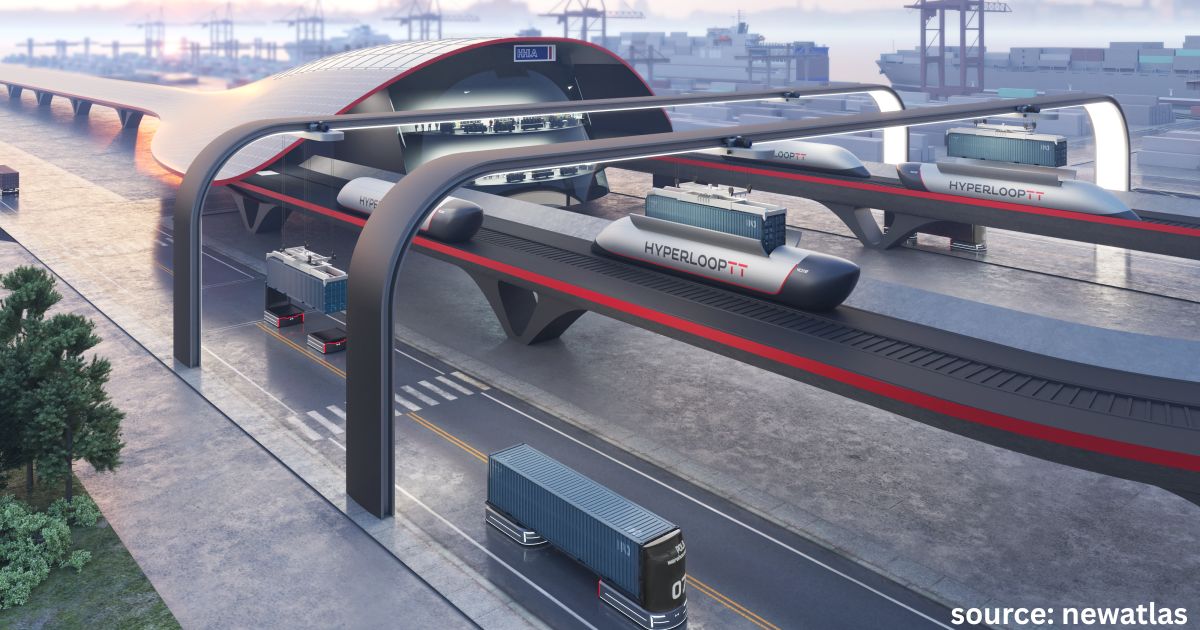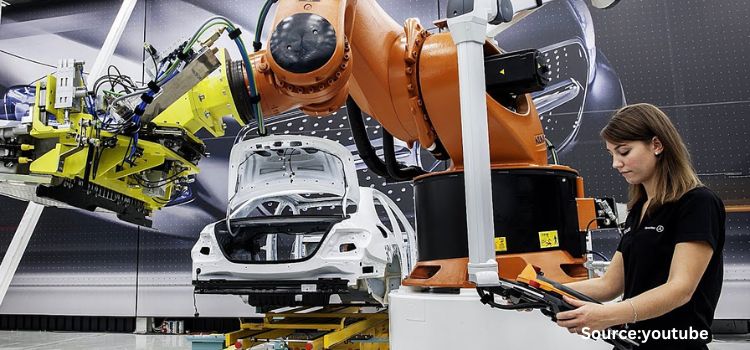
Unit Load Vehicle Robot by Type (Tow Vehicles, Unit Load Carriers, Pallet Trucks, Assembly Line Vehicles, and Forklift Trucks), by Mode of Operation (Indoor and Outdoor), by Navigation Technology (Laser Guidance, Magnetic Guidance, Inductive Guidance, Optical Tape Guidance, and Others), by Application (Transportation, Distribution, Storage, Assembly, and Others), and by Industry (Automotive, Food & Beverages, Aerospace, and Others) – Global Opportunity Analysis and Industry Forecast 2025-2030
US Tariff Impact on Unit Load Vehicle Robot Market
Trump Tariffs Are Reshaping Global Business
Unit Load Vehicle Robot Market Overview
The global Unit Load Vehicle Robot Market size was valued at USD XYZ billion in 2024 and is predicted to reach USD XYZ billion by 2030 with a CAGR of XY% from 2025-2030.
The expansion of aerospace industry, surge in food and beverage sector, and rise online shopping drives the growth of the market. Nevertheless, the high initial price associated with buying and mounting unit load vehicle robots discourages business growth. Conversely, the use of sophisticated navigation technologies including LiDAR and SWIR/LWIR is expected to open future prospects for the market in subsequent years. In addition, the major player such as KUKA AG, Dematic and others are adopting different strategies to maintain their strength in the market.
Market Dynamics and Trends
The Expanding Aerospace Industry Drives Demand for Unit Load Vehicle Robots
The expanding aerospace industry coupled with increasing demand for efficient material handling systems to streamline processes and increase productivity spurs demand for unit load vehicle robots as such systems deliver support to moving large components, enhance on-floor efficiency, and lower labour expenses. The report issued by Space Foundation shows that in 2023, the global space economy experienced a 7% expansion to reach USD 570 billion from USD 530 billion in 2022.Such increase in space industry accelerates the demand for unit load vehicle at a significant rate for efficiently handling the materials within the industry.
The Surge in Food and Beverage Sector Drives Market Expansion
The global food and beverage sector growth drives the expansion of the market as companies apply smart solutions to streamline their processes and supply chain. The robots carry out processes such as material handling, packaging, and stock control to enable companies to increase productivity and manage growing consumer demands better.
As per the report published by the Food & Drink Federation (FDF), in October 2024, the F&B sector in the UK contributes USD 40 billion annually to its economy. Similarly, in revenue generated from the sale of F&B in the U.S. in the second quarter of 2024 was around USD 150 million as per the report published by the Federal Reserve Economic Data. The rising food and beverages sector focuses on the requirement for efficient material handling solution, thereby propelling the unit load vehicle robot market growth.
Rise in E-shoppers Accelerates Market Growth
Rising consumer demand for quicker deliveries coupled with the surge in online shopping is driving the need for unit load vehicle robots to deliver orders more expeditiously. These robots handle repetitive jobs and high order volumes, therefore raising warehouse efficiency as demands for fast delivery go up. Companies that use automation speed up delivery, simplify operations, and thus help themselves keep competitive in the sector.
For instance, the recent report from International Trade Administration states that the e-commerce sector worldwide is expected to reach USD 5.5 trillion by 2027 at a CAGR of 14.4%. With such expansion of online shopping the requirement of warehouse increases driving the growth of unit load AGV robot.
High Upfront Cost Hampers Market Expansion
High costs associated with purchasing and installing unit load vehicle robots hinder market growth, particularly for businesses with limited capital. This financial barrier restricts adoption, as smaller companies struggle to afford the significant upfront investment, slowing overall market expansion.
Incorporation of Advanced Navigation Technologies Creates Opportunities
The integration of advanced navigation technologies such as LiDAR and SWIR/LWIR is anticipated to create future opportunities for the market in upcoming years. LiDAR enables precise navigation and efficient material movement by creating detailed 3D maps, while SWIR and LWIR technologies enhance operation in various lighting and environmental conditions, improving obstacle detection and safety. These advancements allow ULV robot to adapt the changing facility layouts and workflows, enhancing efficiency, safety, and productivity in industrial operations.
Market Segmentations and Scope of the Study
The unit load vehicle robot market report is segmented by type, mode of operation, navigation technology, application, industry and region. On the basis of type, the market is segmented into tow vehicles, unit load carriers, pallet trucks, assembly line vehicles and forklift trucks. On the basis of mode of operation, the market is divided into indoor and outdoor. On the basis of navigation technology, the market is segmented into laser guidance, magnetic guidance, inductive guidance, optical tape guidance, vision guidance, and others.
On the basis of application, the market is segmented into transportation, distribution, storage, assembly, packaging, and waste handling. On the basis of industry, the market is segmented into automotive, food and beverages, aerospace, healthcare, logistics, retail, and others. Regional breakdown and analysis of each of the aforesaid segments includes regions comprising of North America, Europe, Asia-Pacific, and RoW.
Geographical Analysis
Asia-Pacific region holds the dominant in unit load vehicle robot market share and is expected to continue to its dominance during the forecast period. This is due to the expansion of e-commerce sectors that increased the demand for efficient transit of goods within warehouses.
China's cross-border e-commerce was USD 330 billion in 2023 that is a 15.6% increase from the previous year 2022, according to the State Council Information Office report. The surge in internet shopping requires effective and efficient logistics systems to keep up with the rapid surge in the number of commodities, spurring market growth.
Moreover, the increasing production of automotives in this region is further driving the unit load vehicle robot market demand to manage and transport heavy parts and components within manufacturing facilities more effectively and meeting the growing needs for precision and speed in automotive production.
According to the Government of India, in June 2024, India emerged as the third largest heavy truck manufacturer and fourth largest car manufacturers in the world with the total production of around 28.43 million vehicles from April 2023 to March 2024. With such rise in the production of automotive vehicles the need for unit load vehicle robot to carry heavy loads and transfer of products from one location to other increases significantly driving the growth of the market.
Conversely, North America region exhibits a consistent increase in unit load vehicle industry over the forecast period. This is due to the progress in robotics and automation in production as these technologies improve production efficiency, minimize labor expenses, and enhance material handling precision.
As published in the International Federation of Robotics, in 2024, manufacturing companies in the U.S. invested in automation with total installations of robots rose by 12% and reached 44,303 units in 2023. The rise in investment for automation in industries for efficiently transporting large unit loads within various facilities drives the demand for unit load vehicle robot.
Additionally, the growing food and beverage industry in the region supports the need for ULV robots to perform materials efficiently and optimize operations. ULV robots solve problems by undertaking repetitive tasks, reducing errors, and increasing productivity in warehouses and manufacturing plants.
As per the Canadian government, processing of food and drink was Canada's most lucrative manufacturing sector in terms of sales of manufactured goods in 2023, at a total of USD 112.06 billion. The food and drink sector's high growth spurs demand for material handling systems that are efficient, thereby spurring the expansion of the market.
Competitive Landscape
Various key players operating in the unit load vehicle robot industry are ek robotics GmbH, Bastian Solutions, LLC, Dematic, Swisslog Holding AG, Egemin Automation Inc., Daifuku Co., Ltd., Toyota Industries Corporation, Kion Group AG, JBT Corporation, KUKA AG and others. These companies are adopting various strategies such as product launches to remain dominant in the market.
For example, in April 2023, EK Robotics introduced a next-generation unit load vehicle robot designed to address the stringent requirements of the healthcare sector. With this launch the company aims to addresses the highest hygienic standards required for such environments.
Also, in March 2023, Swisslog Holding AG unveiled the latest generation of its Carry pick mobile robotic goods-to-person storage and retrieval system. It features quicker and more responsive automated guided vehicles (AGVs) to drive performance levels up and reduce the return on investment for customers.
Key Benefits
-
The report provides quantitative analysis and estimations of the unit load vehicle robot market from 2025 to 2030, which assists in identifying the prevailing market opportunities.
-
The study comprises a deep-dive analysis of the current and future unit load vehicle robot market trends to depict prevalent investment pockets in the industry.
-
Information related to key drivers, restraints, and opportunities and their impact on the unit load vehicle robot market provided in the report.
-
Competitive analysis of the players, along with their market share is provided in the report.
-
SWOT analysis and Porters Five Forces model is elaborated in the study.
-
Value chain analysis in the market study provides a clear picture of roles of stakeholders.
Unit Load Vehicle Robot Market Key Segments
By Type
-
Tow Vehicles
-
Unit Load Carriers
-
Pallet Trucks
-
Assembly Line Vehicles
-
Forklift Trucks
By Mode of Operation
-
Indoor
-
Outdoor
By Navigation Technology
-
Laser Guidance
-
Magnetic Guidance
-
Inductive Guidance
-
Optical Tape Guidance
-
Vision Guidance
-
Others
By Application
-
Transportation
-
Distribution
-
Storage
-
Assembly
-
Packaging
-
Waste Handling
By Industry
-
Automotive
-
Food and Beverages
-
Aerospace
-
Healthcare
-
Logistics
-
Retail
-
Others
By Region
-
North America
-
The U.S.
-
Canada
-
Mexico
-
-
Europe
-
The U.K.
-
Germany
-
France
-
Italy
-
Spain
-
Denmark
-
Netherlands
-
Finland
-
Sweden
-
Norway
-
Russia
-
Rest of Europe
-
-
Asia-Pacific
-
China
-
Japan
-
India
-
South Korea
-
Australia
-
Indonesia
-
Singapore
-
Taiwan
-
Thailand
-
Rest of Asia-Pacific
-
-
RoW
-
Latin America
-
Middle East
-
Africa
-
Key Players
-
EK robotics GmbH
-
Bastian Solutions, LLC.
-
Dematic
-
Swisslog Holding AG
-
Egemin Automation Inc.
-
Daifuku Co., Ltd.
-
Toyota Industries Corporation
-
JBT Corporation
-
KUKA AG
-
Suzhou Casun Intelligent Robot Co., Ltd.
-
Murata Machinery
-
Schaefer Systems International Pvt Ltd
-
E80 Group S.p.a.
-
Cassioli Srl
-
Seegrid
REPORT SCOPE AND SEGMENTATION
|
Parameters |
Details |
|
Market Size in 2024 |
USD XYZ billion |
|
Revenue Forecast in 2030 |
USD XYZ billion |
|
Growth Rate |
CAGR of XY% from 2025 to 2030 |
|
Analysis Period |
2024–2030 |
|
Base Year Considered |
2024 |
|
Forecast Period |
2025–2030 |
|
Market Size Estimation |
Billion (USD) |
|
Growth Factors |
|
|
Countries Covered |
28 |
|
Companies Profiled |
15 |
|
Market Share |
Available for 10 companies |
|
Customization Scope |
Free customization (equivalent to up to 80 working hours of analysts) after purchase. Addition or alteration to country, regional, and segment scope. |
|
Pricing and Purchase Options |
Avail customized purchase options to meet your exact research needs. |

















 Speak to Our Analyst
Speak to Our Analyst





















